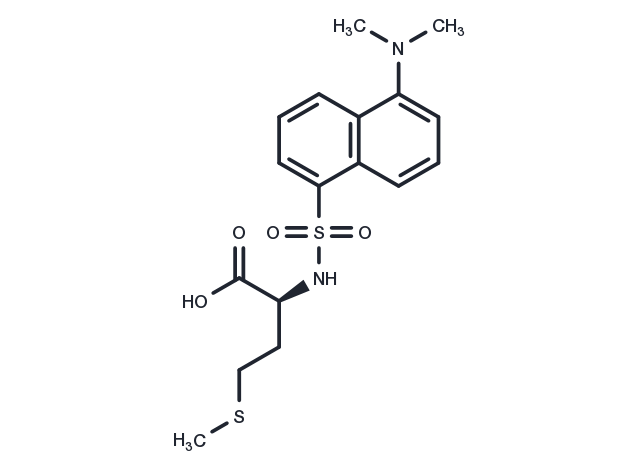Powder: -20°C for 3 years | In solvent: -80°C for 1 year


Dansylmethionine is a common cosubstrate involved in methyl group transfers, transsulfuration, and aminopropylation. Although these anabolic reactions occur throughout the body, most SAM-e is produced and consumed in the liver. More than 40 methyl transfers from SAM-e are known, to various substrates such as nucleic acids, proteins, lipids and secondary metabolites. It is made from adenosine triphosphate (ATP) and methionine by methionine adenosyltransferase.

| Pack Size | Availability | Price/USD | Quantity |
|---|---|---|---|
| 25 mg | 6-8 weeks | $ 1,520.00 | |
| 50 mg | 6-8 weeks | $ 1,980.00 | |
| 100 mg | 6-8 weeks | $ 2,500.00 |
| Description | Dansylmethionine is a common cosubstrate involved in methyl group transfers, transsulfuration, and aminopropylation. Although these anabolic reactions occur throughout the body, most SAM-e is produced and consumed in the liver. More than 40 methyl transfers from SAM-e are known, to various substrates such as nucleic acids, proteins, lipids and secondary metabolites. It is made from adenosine triphosphate (ATP) and methionine by methionine adenosyltransferase. |
| Synonyms | Dansyl methionine, Dansyl-met |
| Molecular Weight | 382.5 |
| Formula | C17H22N2O4S2 |
| CAS No. | 17039-58-6 |
Powder: -20°C for 3 years | In solvent: -80°C for 1 year
You can also refer to dose conversion for different animals. More
bottom
Please see Inhibitor Handling Instructions for more frequently ask questions. Topics include: how to prepare stock solutions, how to store products, and cautions on cell-based assays & animal experiments, etc.
Dansylmethionine 17039-58-6 Dansyl methionine Dansyl-met inhibitor inhibit
